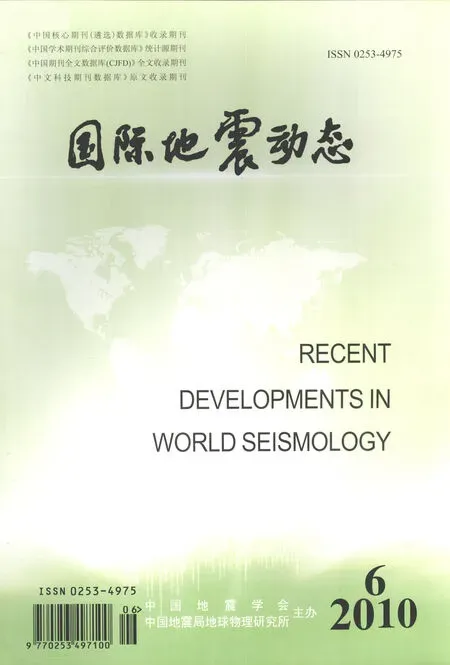Holocene paleoearthquake activity along the 2008 Wenchuan earthquake ruptures of the Beichuan and Pengguan faults
Wen-Shan Chen(陈文山),Yong-Kang Ranand Xiwei Xu
1)Department of Geosciences,Taiw an University,Taipei 10617 2)Institute of Geology,CEA,Beijing 100029
The May 12,2009 MW8.0 Wenchuan earthquake brought nearly 300 km in length surface ruptures along the frontal Longmenshan orogenic belt where occurred the largest natural disaster in western Sichuan,China.The o rogenic belt consists of a series of subparallel thrust faults of Wenchuan-Maoxian,Beichuan and Pengguan faults,which form an east-verging fold-thrust belt.Based on the historical earthquake record during the past 2000 years,the western Sichuan has been a non-seismically active area(larger earthquake).Basic information on the paleoseismicty of active faults are virtually lacking,and there fore,weneed urgently to collect data about the recurrence,slip rate,and amount of displacement per event that characterize the Holocene behavior of the Beichuan and Pengguan faults in the frontal Longmenshan orogenic belt.In this study,we selected two excavated sitesof Yingxiu and Beilu trenches across the Beichuan and Pengguan faults,respectively.Discriminating between structural and depositional relationships in the excavations,the Yingxiu site across the Beichuan fault can be identified with three surface-rup turing earthquake events during the past 5.9 k·a,the Beilu site across the Penggan fault is identified with two events during the past 14.3 k·a. We estimate slip rate of the Beichuan and Pengguan faults which have the long-term vertical slip rate of 1.3 mm/yr and 0.28 mm/yr,respectively.

